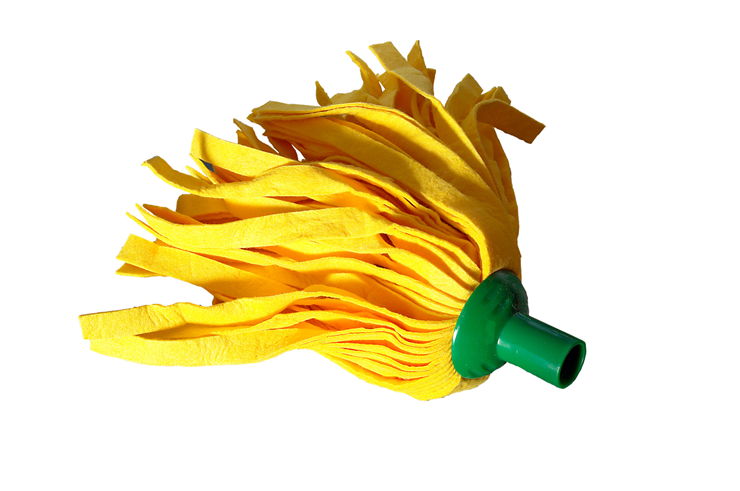Floor Mop - History and Types of Mop
Mop is a tool used for cleaning floors. It consists of bundle of strings or yarn, or a piece of cloth, sponge, or some other absorbent material which is fixed to a pole which acts as a handle.
The word “”mop (although it was then spelled “mappe”) appeared in English language 1496 and since then it was improved many times. For instance American inventor Jacob Howe patented a mop holder in 1837 while Thomas W Stewart patented his variant of a mop (a deck mop made of yarn) in 1893. Homemade mops were made from old pieces of cloth and so-called “mop nail” - long nail with a wide flat head which would hold the pieces and then nailed into a handle. Peter Vosbikian patented a sponge mop in 1950. It used a lever and flat strip of metal to squeeze the mop dry. In 1999, Scotch Brite developed a wet mop which is made of natural cellulose and does not leave lint like a cloth mop meaning it cleans better. Like you can see, improvements of a mop don’t stop but they all generally have three main parts: mop head that cleans, handle and mechanical attachment that connects them. Otherwise they are divided like this:
Dry-mop or a dust-mop is made of yarn or microfiber textile and is used to pick up dust, sand or other dry dirt. When the floors are cleaned professionally, it is used as a first step in cleaning. When dirty it can be washed in a washing machine or, if it is of a single-use kind - thrown away.
Wet-mops or moist-mops are used in a second step of the professional cleaning. Their heads are made of flat sheets of microfiber cloth or of sheets with a surface of looped yarn. They can clean fat, mud and dried-in liquids of the floor.
Mops for pre-moisturizing are flat mops of microfiber cloth that are moistened before they are used and don’t need buckets of water because they hold enough water and detergent to “work.” They are connected to a handle with a Velcro so they can be detached and attached with ease. They also don’t leave puddles from the excess of water if they are ideally wetted according to recommendations of the manufacturer.
Cut end mops have yarn that has cut ends (hence the name).They are least expensive type of mop and don’t last long because it is not recommended to was them after they got too dirty. They are usually made of cotton.
Looped end mops are made of looped yarn (they have loop at the free end compared to cut end mops). They provide more surface are, can contain more water, and can last longer. If they are made of cotton, or mixture of polyester and cotton they are also not machine washable.
Microfiber mops have heads that are made from polyester and polyamide. They hold to dirt that they cleaned until washed in water and can hold larger quantities of water than any other type of mop. They can also be washed more than 500 times without losing their characteristics. Their use requires less chemicals and because of that they are considered more eco-friendly.
Some places, like hospitals, schools, and nursing homes, require careful cleaning because cross-contamination could happen and endanger those with weakened immune system. Because of that there are industry standard color coding systems for marking the mops according to the places that they have and must clean. Reds are for high-risk areas like toilets and urinals. Yellow clean labs, gymnasiums, sinks and mirrors. Blue are for all-purpose cleaning while green are for food service areas like kitchens.
